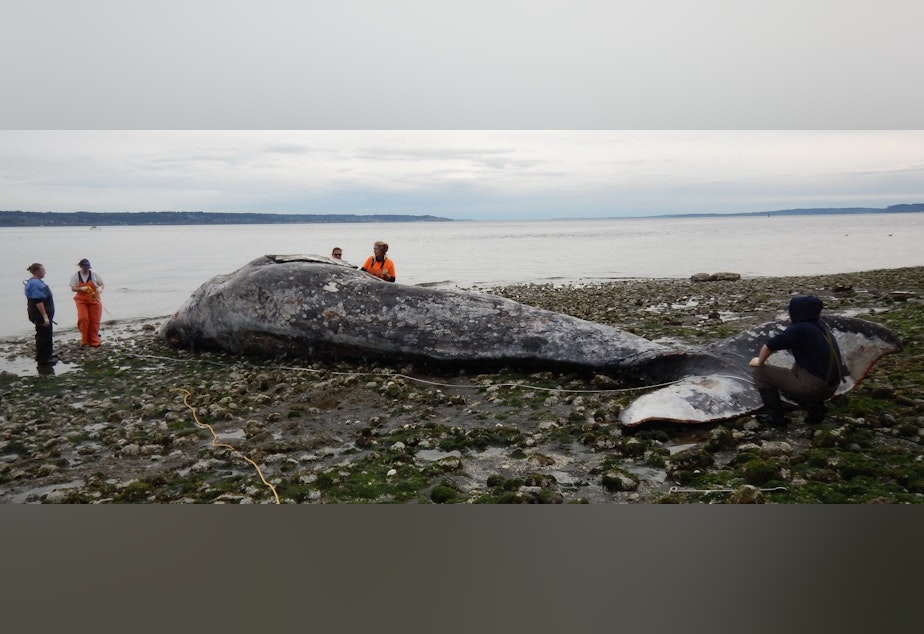Why are gray whales washing up dead on Pacific Northwest beaches?

An unusually large number of gray whales are washing up dead on their northbound migration past the Oregon and Washington coasts this year.
The peak stranding time for gray whales in the Pacific Northwest is normally April, May and June. But the federal agency NOAA Fisheries has already logged nine dead whales washed ashore in Washington and one in Oregon. That's on top of 21 strandings on California beaches since the beginning of the year.
There were a total of 25 dead gray whale strandings West Coast-wide in all of 2018.
One 39-foot long dead adult whale was found floating in Elliott Bay last week, right in front of downtown Seattle.
"This is looking like it is going to be a big year for gray whale strandings," said Jessie Huggins, stranding coordinator for the Olympia-based Cascadia Research Collective.
Since February, Huggins has participated in necropsies of malnourished, mostly adult, gray whales on Whidbey Island and the Key Peninsula to Ocean Shores and Long Beach, Washington.
Sponsored
"We're seeing very thin whales with little to no food in their stomachs," Huggins said in an interview Wednesday. "This is kind of leading us to believe that this is an issue of nutritional stress with a few normal-type strandings mixed in."
Huggins said these whales probably didn't get fat enough on their summer feeding grounds in Alaskan waters way back last year.
Responders in raingear and elbow-high rubber gloves cut into the massive carcasses to examine the animals' fat reserves and internal organs. Multiple whales exhibited dry fibrous blubber. The responders noted ribcages and vertebra sticking out, measured healed scars and took tissue samples for later analysis for contaminants.
Despite the unusual number of dead whales found, NOAA Fisheries spokesman Michael Milstein said the overall population of gray whales is fine, "probably as big as it's ever been" in modern times.
Eastern Pacific gray whales were taken off the endangered species list in 1994. The population is now estimated at 27,000, which may be around the carrying capacity of their ocean territory.
Sponsored
"They've been coming back strong," said Milstein by telephone from Portland Wednesday.
Gray whale and humpback whale casualties from entanglement in commercial and tribal fishing gear have been a growing concern for federal officials, certain environmental groups and the fishing industry lately. None of dead gray whales found this spring on Oregon and Washington beaches were entangled in fishing or crabbing lines, however.
Crabbers and fishing boat owners are scheduled to meet with researchers and government representatives when two separate work groups convene next month along the Oregon and Washington coasts to hear updates about entanglement risk reduction strategies.
Sometimes it takes a village to examine and pull samples from a decomposing whale. Huggins said she has worked alongside colleagues this winter and spring from Portland State University, Seattle Pacific University, the nonprofit SR3, Washington Department of Fish & Wildlife and World Vets.
If you see a stranded whale (or other marine mammal in distress), you can report it to the West Coast Marine Mammal Stranding Hotline: 1-866-767-6114. [Copyright 2019 Northwest News Network]




